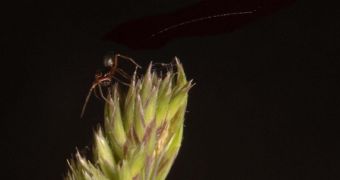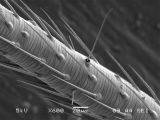People enjoy flying.
This pleasure comes like a shout since the antiquity, with the myth of Daedalus.
And ballooning brings you closer to a real sensation of hovering. But do not think that humans are the only wingless beings able to fly.
Spiders too enjoy ballooning and thousands of flying spiders can flood a terrain on the right days. And before putting out their silk thread to take on the air, a spider investigate the weather, just the same way a human pilot does it on a pre-flight routine.
Spiders need a right combination between wind speed and sunshine, the best conditions being reunited during cloudy fall and spring days, as the research team discovered.
For the ballooning, the spiders employ a "dragline" of silk thread, which is carried by the wind, while the owners clang to the lower extremity. The wind pushes on the thread while the sun heat forms updrafts for the take-off.
The team made of biologists and mathematicians with Rothamsted Research in England measured distances made under different combinations of wind and sun levels. The computer modeling pointed out as the best flight time for the spiders on cloudy fall and spring days.
During the hot summer days the spider get superior updrafts but the lack of breeze makes them unable to drift anywhere once up in the air. But winter storms are also up to no good, as too strong winds interfere with the updrafts, impeding the flight. So, the spiders employ sensory hairs and pit-like sense organs located on their limbs (on their tarsal segments).
"The literature on spider sensing points to tarsal organs and hairs as having roles in, respectively, the detection of temperature and wind speed," said lead author Andy Reynolds.
This information could support ecological agriculture: spiders destroy pests, such as mites and aphids, and could be a costless and healthy alternative to the toxic pesticides. "Each day of the growing season, around 1,800 spiders land in each hectare (about 2.5 acres) of arable farmland after ballooning," Reynolds said. "If the farmers can predict the influx of spiders, they can reduce the amount of pesticides accordingly."

 14 DAY TRIAL //
14 DAY TRIAL // 
